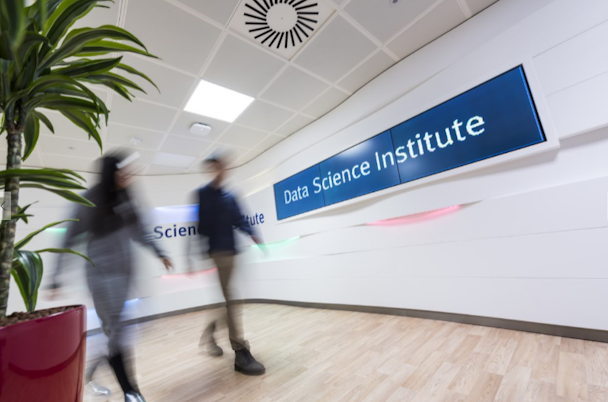Inside the Imperial College London’s Data Science Institute as it opens to marketers for the first time
The Data Science Institute, established in 2014, sits tucked away in a corner of Imperial College London. Behind its unassuming exterior it houses the Data Observatory (DO), the largest of its kind in Europe, with a wall of 64 monitors powered by 32 computers facilitating 313 degrees of surround vision all helping to visualise the vast swathes of data entered into its systems. It has also developed advanced neuroscience techniques and technologies. The Institute has been used by organisations from the NHS to NASA (such is its gravitas that the President of China visited last week) but has been closed to data-obsessed marketers.

Until now.

Creative and digital agency Jaywing recently inked a landmark 3-and-a-half-year partnership with the institution to try and concoct a formula to predict the success of advertising. It forms part of a wider research project to understand consumer behaviour and emotional responses to brand, marketing and advertising content.
Imperial College researchers will also work alongside Jaywing’s creative and 60-strong data science teams on real-life client challenges.
In both instances, they will use advanced neuroscience techniques, such as magnetic resonance imaging (which detects changes in blood oxygen levels in different parts of the brain during a scan to indicate activity), electroencephalograph (when sensors are attached to the scalp to pick up the electrical signals produced when brain cells send messages to each other), and steady state topography (where brain sensors are used but flickering stimulus is also in the visual periphery) to measure a subject’s response to any kind of marketing content.
“[This] is the first opportunity to use the Data Observatory as a research environment for marketing,” explained Yike Guo, founding director of the Data Science Institute.
It’s still early days for the project and no brands have been signed up yet. However, Jaywing has drawn over 100 client-side marketers from the likes of Pepsico, Sky, First Direct, Anne Summers and Merlin Entertainments to the Data Observatory for an up close briefing in the hope of getting some on board.
“The field of marketing is an exciting departure from our typical applications and early indications show the research has huge future potential," added Guo.

The ongoing academic research (which will be published over time) should shed some light on the complex area of neuroscience, which brands from the Post Office to Under Armour – as well as a host of agencies – have held up as a catch-all term for the task of trying to understand what really makes consumers tick and behave the way they do. However, with this comes the propensity for the “science” part to be diluted.
Speaking to The Drum, Martin Boddy - chief executive at Jaywing - explained that the key difference between what it is doing with the Data Institute versus other agency offerings is that its tests will be controlled (i.e ensuring constants in the surrounding environment, for example the room’s temperature) and contain a carefully managed sample of a target audience of at least 20 individuals for any one brand.
"Understanding and predicting the real feelings of consumers is complex, particularly given the huge number of variables involved in generating emotion. This collaboration will enable us to form a scientific framework to predict emotional responses to marketing stimuli and understand how to translate immediate response into long-term brand advocacy."
It’s also not overpromising when it comes to the tech it’s using to do this. For example, while competitors may promise the ability to decipher in nuanced detail the genuine feelings towards a piece of advertising, Jaywing’s initial - and admittedly rushed - first tests are only able to show the level of “excitement” (brain activity) subjects feel at any point not whether that excitement is positive or negative.
A PHD student at the Data Institute told The Drum this is what the sensors it’s using currently are capable of, but with the rapid developments it will soon be able to soon decipher with the exact emotion.
Simultaneously, Jaywing will also be working with advertisers to organise and interpret their own data sets (no small feat when it comes to global, multi-brand companies), so that this may also be ingested by the Data Institute to layer it with the neuroscience learnings.

